Jun
8
2010

“Then all the people shouted with a great shout, when they praised the LORD, because the foundation of the house of the LORD was laid. But many of the priests and Levites and heads of the fathers’ houses, old men who had seen the first temple, wept with a loud voice when the foundation of this temple was laid before their eyes.” Ezra 3:11-12
Doug Wilson writes (Less Glory Is More):
The Bible teaches us that the times of the new covenant are attended with a greater glory than the old covenant, as well as with a greater simplicity. In effect, that simplicity is part of the glory.
Continue reading
2 comments | tags: AD70, Communion, Covenant Theology, Doug Wilson, Ezekiel's Temple, Ezra, Solomon, Totus Christus | posted in Quotes, The Last Days, The Restoration Era
May
13
2010
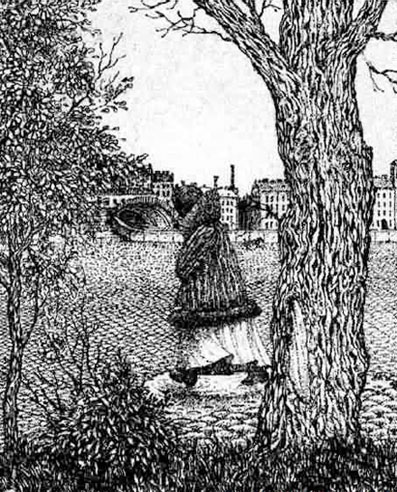
or Jesus, the Destroying Angel
James Jordan says the Revelation is like one of those old human anatomy teaching aids, the ones with layers of acetate. One starts with the skeleton and overlays the nervous system, arteries, organs, etc. They are all connected and yet each is a system that is individually identifiable. This is literature that is irreducibly complex.
Continue reading
1 comment | tags: AD70, Creation Week, James Jordan, Jericho, Jezebel, John, Lampstand, Literary Structure, Revelation, Totus Christus | posted in Biblical Theology
May
4
2010

For he is our peace, who has made us both one, and has broken down the dividing wall of hostility, by abolishing in his flesh the law of commandments and ordinances, that he might create in himself one new man in place of the two, so making peace, and might reconcile us both to God in one body through the cross, thereby bringing the hostility to an end. And he came and preached peace to you who were far off and peace to those who were near; for through him we both have access in one Spirit to the Father. (Ephesians 2:14-18)
So, the New Jerusalem—at least the way it is described in Revelation 21—is the culmination of all the “Day 6s” since the original in the Garden of Eden. And, like the walls of water at the Red Sea and Jordan crossings, this entire, miraculous arrangement is held together by the Mediator-Man, the Lamb standing at the centre.
Continue reading
Comments Off | tags: 666, AD70, Ezra, Genesis, Herod, Nehemiah, oikoumene, Revelation, Solomon, Totus Christus | posted in Biblical Theology, The Last Days, The Restoration Era, Totus Christus
May
1
2010

or The New Jerusalem is Temporary
He will set up a banner for the nations, And will assemble the outcasts of Israel, And gather together the dispersed of Judah From the four corners of the Land. Also the envy of Ephraim shall depart, And the adversaries of Judah shall be cut off; Ephraim shall not envy Judah, And Judah shall not harass Ephraim. But they shall fly down upon the shoulder of the Philistines toward the west; Together they shall plunder the people of the East; They shall lay their hand on Edom and Moab; And the people of Ammon shall obey them. The LORD will utterly destroy the tongue of the Sea of Egypt; With His mighty wind He will shake His fist over the River, And strike it in the seven streams, And make men cross over dry-shod. There will be a highway for the remnant of His people Who will be left from Assyria, As it was for Israel In the day that he came up from the land of Egypt. (Isaiah 11:12-16)
Everyone knows what “walking on water” means. You can do the impossible. Often it has a negative spin, as when it is applied to politicians with a Messiah-complex.
But what does it actually mean in the Bible? And why did Jesus do it?
Continue reading
6 comments | tags: AD70, Against Hyperpreterism, Atonement, Baptism, Daniel, Herod, High Priest, Isaiah, Passover, Tabernacle, Totus Christus | posted in Biblical Theology, Creation, The Last Days, The Restoration Era
Apr
16
2010
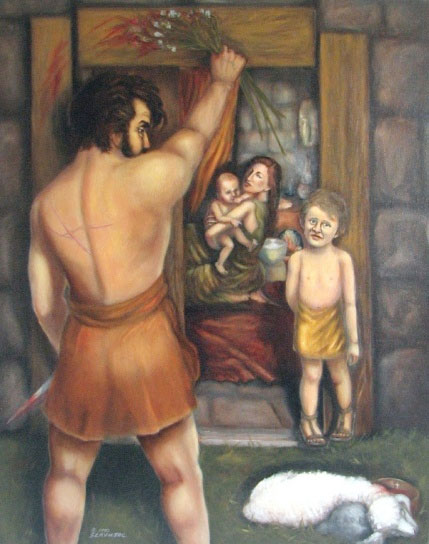
“Do not forgive them, Father. They know exactly what they are doing.”
THIS POST HAS BEEN REMIXED AND INCLUDED IN GOD’S KITCHEN: THEOLOGY YOU CAN EAT AND DRINK
You must be logged in to see the rest of this post.
Join now for a year for $15!
Throughout the Bible there are two doors, or more correctly, a door and a window.
Both of them involve blood. The first takes us out of the world. The second puts us in government. The first is the Passover door, the second is a window in Jericho. One mirrors the other chiastically in the journey from slavery to Sabbath.
Continue reading
Comments Off | tags: AD70, Atonement, Feasts, Halden Doerge, Passover, Pentecost, Tabernacle | posted in Biblical Theology, Quotes, The Last Days
Feb
2
2010

41. The cities of the nations never fell in A.D. 70 (Rev. 16: 19).
This is a symbolic passage, but when we understand its nature, its message is astonishing. The reference to Jerusalem being divided into three parts alludes to Deuteronomy 19:3 concerning cities of refuge. There is also a “trinitarian” judgment in Ezekiel 5. Both are the outflow of the structure of the Tabernacle, which in turn images the pattern of heaven. This verse in Revelation 16 is, ironically, at the Tabernacle/Ascension step in this matrix pattern:
Continue reading
2 comments | tags: AD70, Dispensationalism, Ezekiel, Melchizedek, Revelation | posted in Biblical Theology, The Last Days, Totus Christus
Jan
26
2010
31. The remnant of Israel still practices iniquity (Zeph. 3: 13).
Drew was right. Some of these really are weak. Zephaniah denounces Judah for her indulgence in idolatry and luxury while she presumed the Lord would protect her. He predicts a new Jerusalem without these sins. All fulfilled. Ripping the prophets out of context and applying them to modern “Jews” is not only infantile exegesis, it removes most of the Bible from the real world so it can apply to some future Jews. God doesn’t work that way. He warns, waits a generation, then judges. Always. Same thing goes for the Revelation.
Continue reading
Comments Off | tags: AD70, Feasts, Literary Structure, Zechariah | posted in Biblical Theology, The Last Days
Jan
17
2010
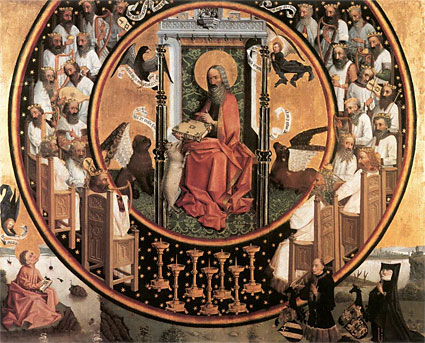
11. “We shall see Him as He is.” (1 John 3: 2). Never happened in A.D. 70.
12. “We shall know, even as we are known” (1 Cor. 13: 12). Still not fulfilled — unless you redefine knowledge.
I believe the first resurrection occurred during the Jewish war. Revelation specifically teaches two resurrections bookending the kingdom age. The end of the Temple was the coming of the kingdom. We cannot spiritualise this idea and say the first resurrection is conversion. That’s not what the text says. It says that those who took part in the first resurrection lived and reigned with Christ for the millennium. They are a human government in heaven. See Big Government.
I am not conceding anything to hyperpreterists. Yes, I believe they are right (to some degree) concerning a resurrection in AD70. What they don’t take into account is the pattern of the bigger picture laid down in the Old Testament, starting in Genesis, a pattern that structures the world, the Tabernacle, and even the human body, that leaves their denial of a future resurrection and judgment without justification. A physical “Land” resurrection actually guarantees a physical “World” resurrection. See Trinitarian Judgments.
Continue reading
Comments Off | tags: AD70, Resurrection | posted in Against Hyperpreterism, Biblical Theology, The Last Days, The Restoration Era, Totus Christus
Jan
13
2010
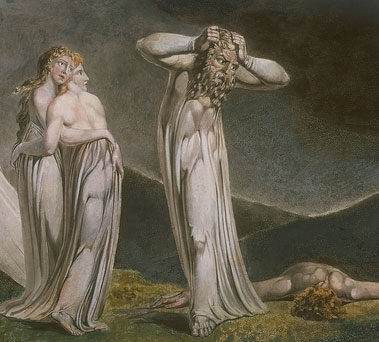
“Peter came to Him and said, ‘Lord, how often shall my brother sin against me, and I forgive him? Up to seven times?’ Jesus said to him, ‘I do not say to you, up to seven times, but up to seventy times seven.’” (Matthew 18:21-22)
Genesis 4 seems to contain two “feast” cycles. Near the end of the first, at “Atonement”, the Lord set a mark upon Cain to protect him from vengeance. As on the Day of Covering after Adam’s sin in Eden, the full weight of the law was withheld. Cain complained that his “liability” was greater than he could bear. Cain was covered but he still went from the presence of the Lord, as the goat which carried the sins into the wilderness. It seems Cain despised mercy.
Just as the Lord and the Land were two witnesses against his crime, he now fled from the face of the Lord and the face of the Land. Only the High Priest could face God, standing in the Veil, the firmament between heaven and earth. Abel was the true facebread, the authorised priest. [1]
Continue reading
6 comments | tags: Abel, Abraham, AD70, Atonement, Azal, Cain, Esau, Genesis, Herod, Jacob, Lamech, The flood | posted in Biblical Theology, The Last Days
Jan
7
2010
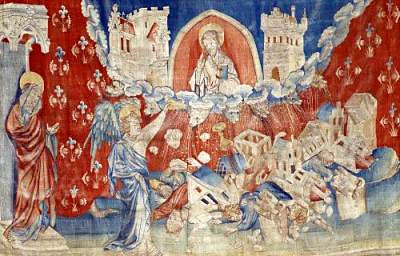
Revelation can’t be fully appreciated without attention to its literary structure. I’m no expert, but have a gander at this…
Continue reading
4 comments | tags: AD70, Atonement, David Chilton, Feasts, James Jordan, Literary Structure, Pentecost, Revelation | posted in Biblical Theology, The Last Days, Totus Christus


































